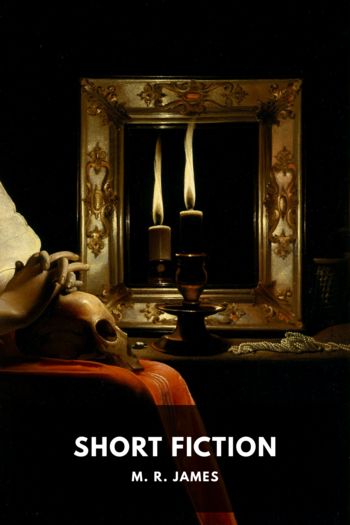Short Fiction, M. R. James [best classic books of all time TXT] 📗

- Author: M. R. James
Book online «Short Fiction, M. R. James [best classic books of all time TXT] 📗». Author M. R. James
I need only add that the careless maidservant was dismissed forthwith, but that the missing stair-rod was very shortly afterwards found under the stair-carpet—an additional proof, if any were needed, of extreme stupidity and carelessness on her part.
For a good many years Dr. Haynes had been marked out by his ability, which seems to have been really considerable, as the likely successor of Archdeacon Pulteney, and no disappointment was in store for him. He was duly installed, and entered with zeal upon the discharge of those functions which are appropriate to one in his position. A considerable space in his journals is occupied with exclamations upon the confusion in which Archdeacon Pulteney had left the business of his office and the documents appertaining to it. Dues upon Wringham and Barnswood have been uncollected for something like twelve years, and are largely irrecoverable; no visitation has been held for seven years; four chancels are almost past mending. The persons deputized by the archdeacon have been nearly as incapable as himself. It was almost a matter for thankfulness that this state of things had not been permitted to continue, and a letter from a friend confirms this view. “ὁ κατέχων,” it says (in rather cruel allusion to the Second Epistle to the Thessalonians), “is removed at last. My poor friend! Upon what a scene of confusion will you be entering! I give you my word that, on the last occasion of my crossing his threshold, there was no single paper that he could lay hands upon, no syllable of mine that he could hear, and no fact in connection with my business that he could remember. But now, thanks to a negligent maid and a loose stair-carpet, there is some prospect that necessary business will be transacted without a complete loss alike of voice and temper.” This letter was tucked into a pocket in the cover of one of the diaries.
There can be no doubt of the new archdeacon’s zeal and enthusiasm. “Give me but time to reduce to some semblance of order the innumerable errors and complications with which I am confronted, and I shall gladly and sincerely join with the aged Israelite in the canticle which too many, I fear, pronounce but with their lips.” This reflection I find, not in a diary, but a letter; the doctor’s friends seem to have returned his correspondence to his surviving sister. He does not confine himself, however, to reflections. His investigation of the rights and duties of his office are very searching and businesslike, and there is a calculation in one place that a period of three years will just suffice to set the business of the Archdeaconry upon a proper footing. The estimate appears to have been an exact one. For just three years he is occupied in reforms; but I look in vain at the end of that time for the promised Nunc dimittis. He has now found a new sphere of activity. Hitherto his duties have precluded him from more than an occasional attendance at the Cathedral services. Now he begins to take an interest in the fabric and the music. Upon his struggles with the organist, an old gentleman who had been in office since 1786, I have no time to dwell; they were not attended with any marked success. More to the purpose is his sudden growth of enthusiasm for the Cathedral itself and its furniture. There is a draft of a letter to Sylvanus Urban (which I do not think was ever sent) describing the stalls in the choir. As I have said, these were of fairly late date—of about the year 1700, in fact.
“The archdeacon’s stall, situated at the southeast end, west of the episcopal throne (now so worthily occupied by the truly excellent prelate who adorns the See of Barchester), is distinguished by some curious ornamentation. In addition to the arms of Dean West, by whose efforts the whole of the internal furniture of the choir was completed, the prayer-desk is terminated at the eastern extremity by three small but remarkable statuettes in the grotesque manner. One is an exquisitely modelled figure of a cat, whose crouching posture suggests with admirable spirit the suppleness, vigilance, and craft of the redoubted adversary of the genus Mus. Opposite to this is a figure seated upon a throne and invested with the attributes of royalty; but it is no earthly monarch whom the carver has sought to portray. His feet are studiously concealed by the long robe in which he is draped: but neither the crown nor the cap which he wears suffice to hide the prick-ears and curving horns which betray his Tartarean origin; and the hand which rests upon his knee is armed with talons of horrifying length and sharpness. Between these two figures stands a shape muffled in a long mantle. This might at first sight be mistaken for a monk or ‘friar of orders gray,’ for the head is cowled and a knotted cord depends from somewhere about the waist. A slight inspection, however, will lead to a very different conclusion. The knotted cord is quickly seen to be a halter, held by a hand all but concealed within the draperies; while the





Comments (0)